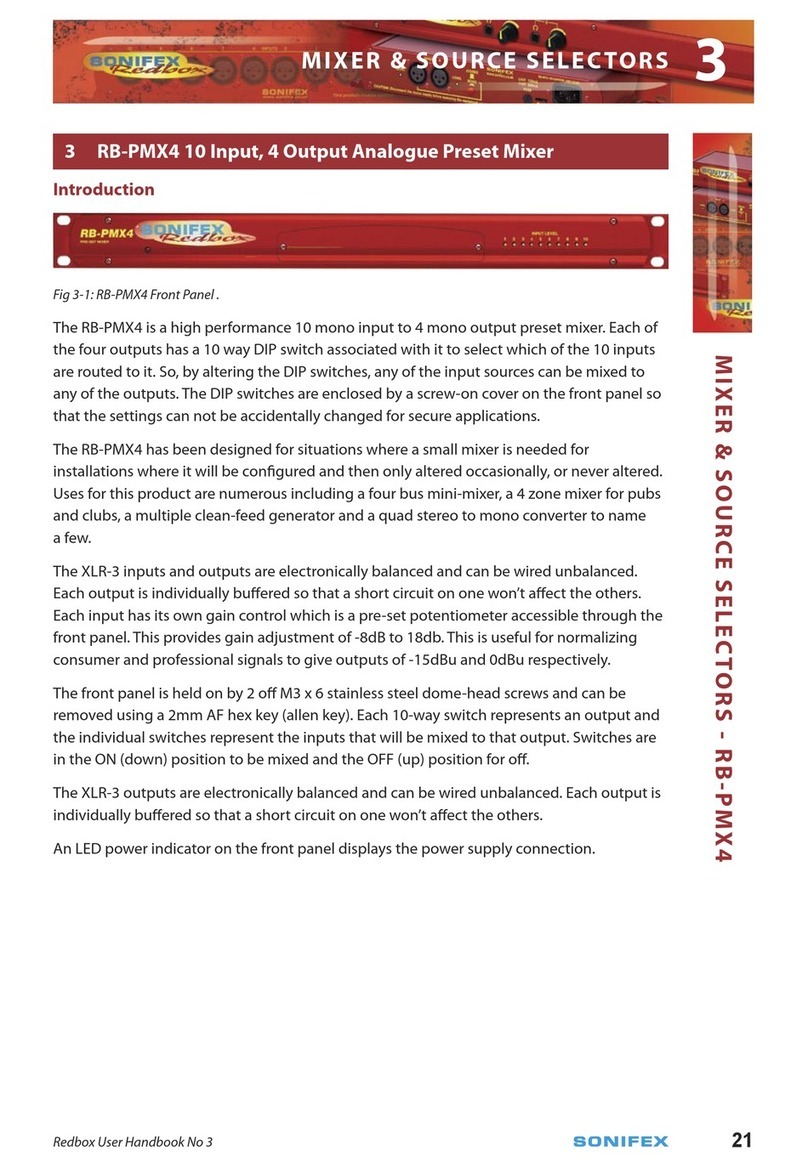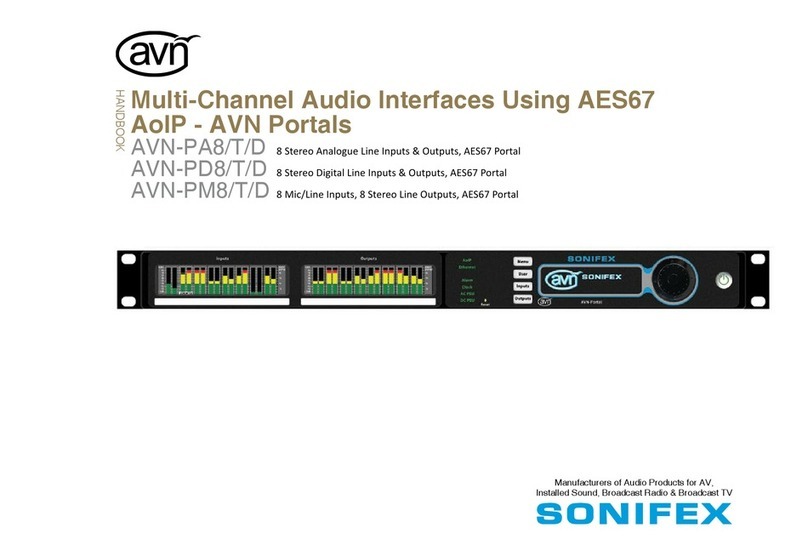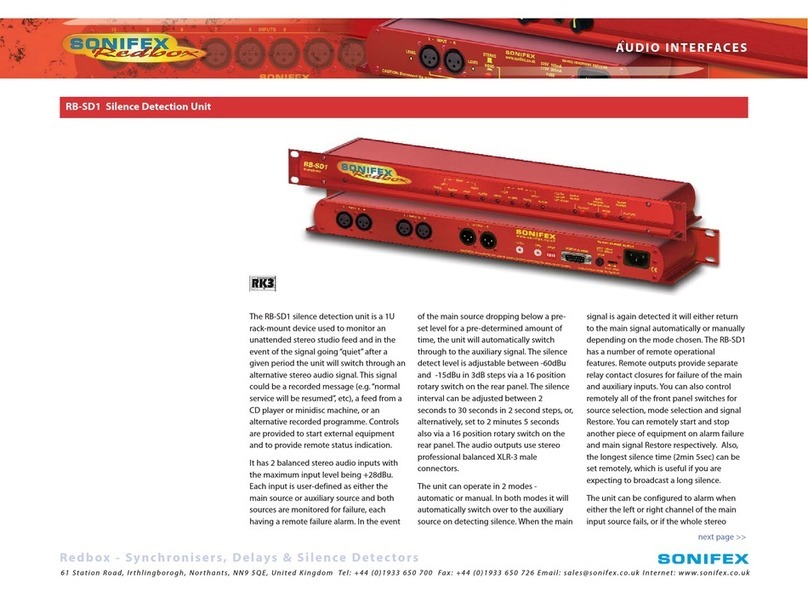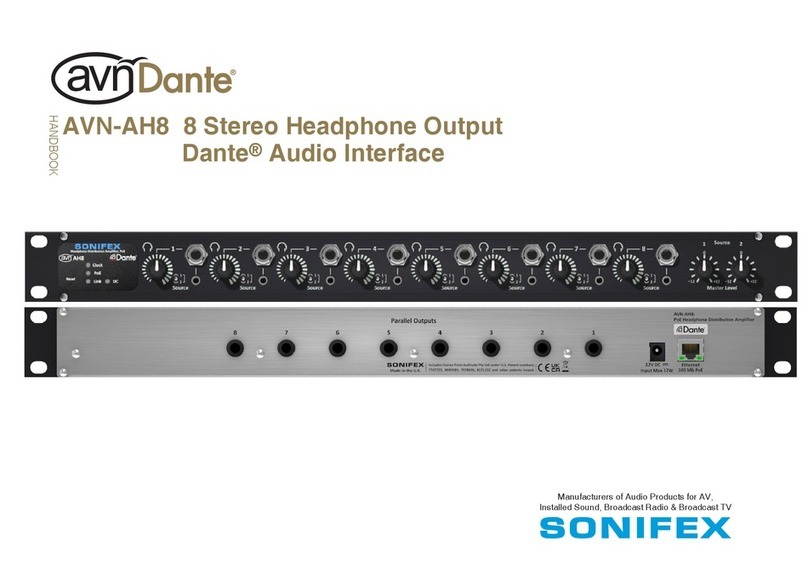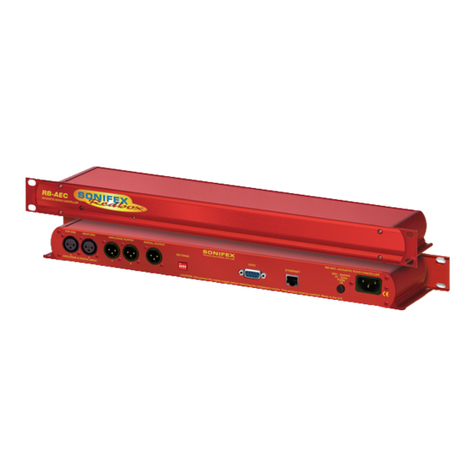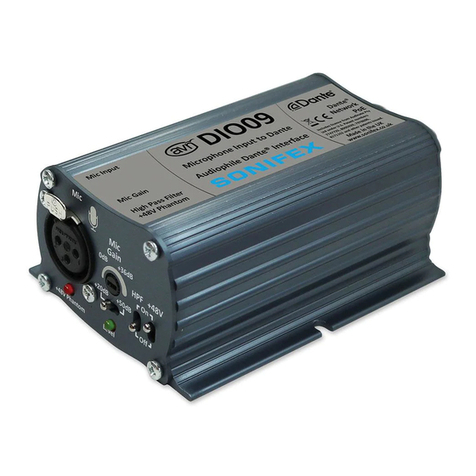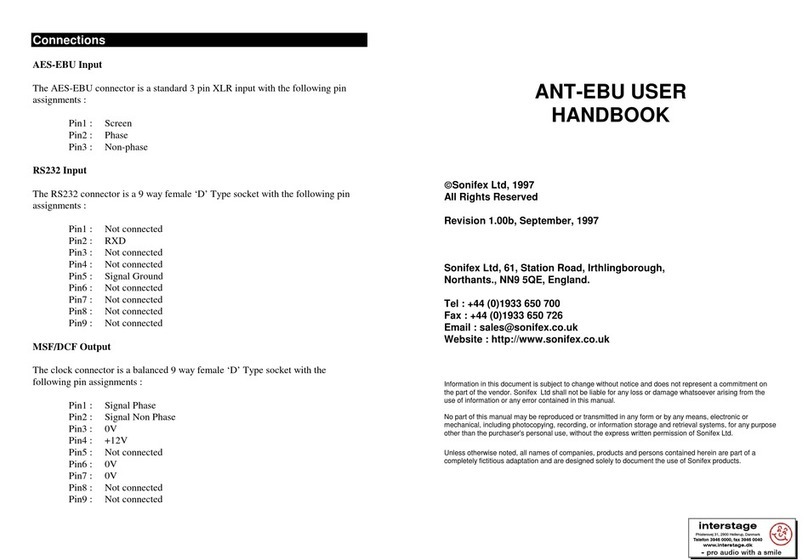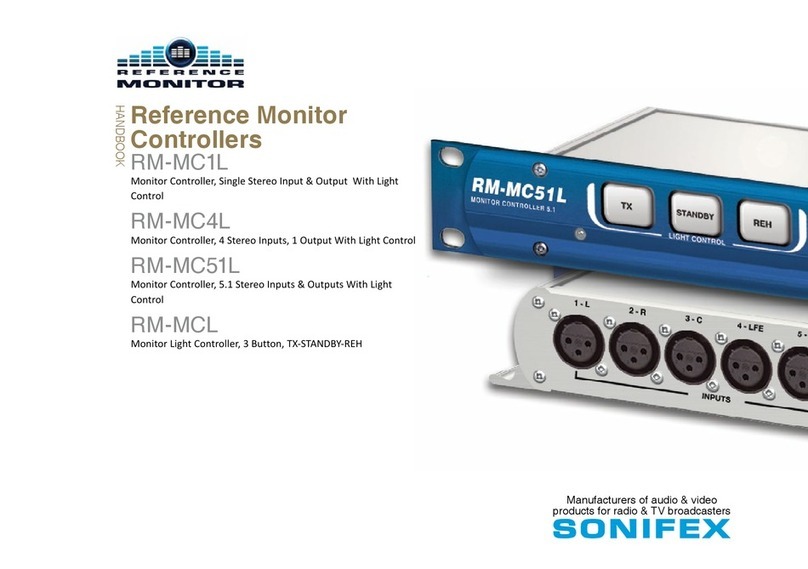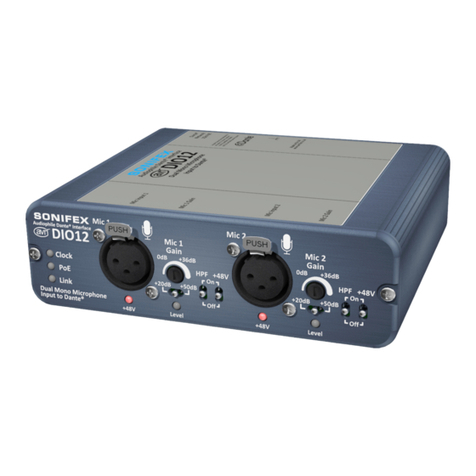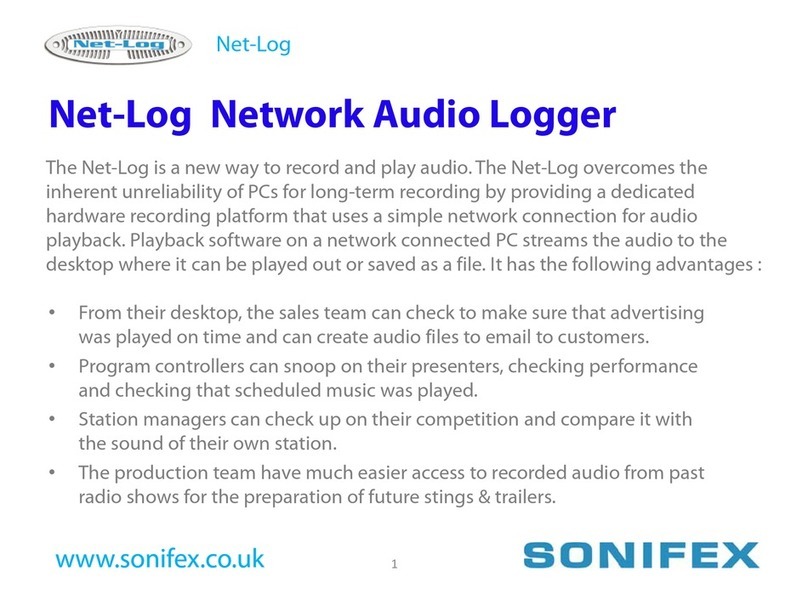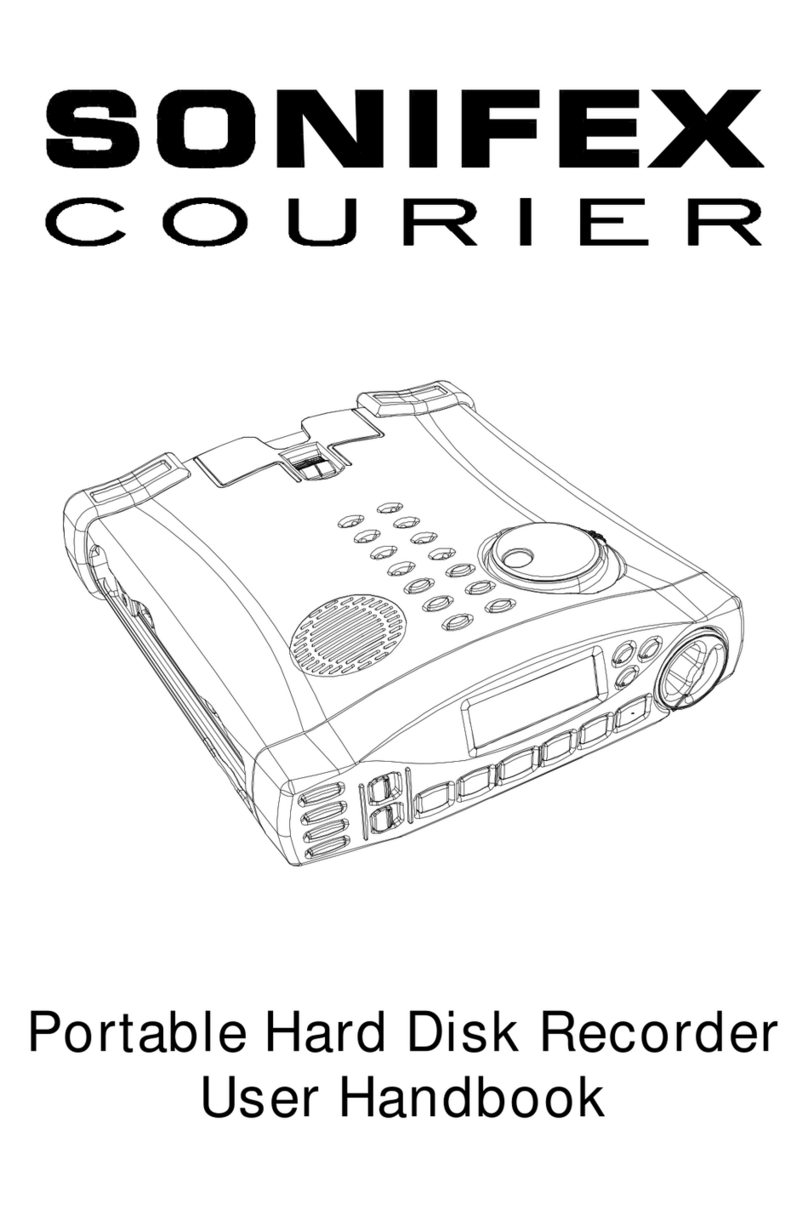
Figures
Figures
Fig A: RB-RK1Small Redbox Front Rack-mount Kit . v
Fig B: RB-RK2 Small Redbox Rear Rack-mount Kit. vi
Fig C: RB-RK3 Large Redbox Rear Rack-mount Kit. vi
Fig 1-1: RB-SD1 Front Panel 1
Fig 1-2: RB-SD1 System Block Diagram 2
Fig 1-3: RB-SD1 Rear Panel 3
Fig 1-4: RB-SD1 Front Panel 5
Fig 2-1: RB-SD1IP Front Panel 10
Fig 2-2: RB-SD1IP System Block Diagram 12
Fig 2-3: RB-SD1IP Rear Panel 13
Fig 2-4: RB-SD1IP Front Panel 16
Fig 2-5: Sonifex Service Discovery - Bonjour Page 20
Fig 2-6: Sonifex Service Discovery - Legacy Discovery Page 20
Fig 2-7: RB-SD1IP Screenshot of the Webserver Home Page 21
Fig 2-8: RB-SD1IP Screenshot of the Webserver Device Page 22
Fig 2-9: RB-SD1IP Screenshot of the Webserver Network
Settings Page 23
Fig 2-10: RB-SD1IP Screenshot of the Webserver Level
& Time Settings Page 24
Fig 2-11: RB-SD1IP Screenshot of the Webserver Sources Page 25
Fig 2-12: RB-SD1IP Screenshot of the Webserver Alarms Page 26
Fig 2-13: RB-SD1IP Screenshot of the Webserver SNMP Page 27
Fig 2-14: RB-SD1IP Screenshot of the Webserver USB Page 28
Fig 2-15: RB-SD1IP Screenshot of the Webserver Remotes Page 29
Fig 2-16: RB-SD1IP Screenshot of the Webserver GPIO Page 30
Fig 2-17: RB-SD1IP Screenshot of the Webserver
Physical Settings Page 31
Fig 2-18: RB-SD1IP Screenshot of the Webserver Update
Firmware Page 32
Fig 3-1: RB-DSD1 Front Panel 34
Fig 3-2: RB-DSD1 System Block Diagram 36
Fig 3-3: RB-DSD1 Front Panel Controls and Indicators 36
Fig 3-4: SILENCE Detect Duration DIPSwitch 37
Fig 3-5: SILENCE Detect Audio Trigger Level DIPSwitch 38
Fig 3-6: SILENCE Detect Stereo/Mono & Sync Source DIPSwitch 38
Fig 3-7: Rear Panel DIPSwitches 38
Fig 3-8: RB-DSD1 Rear Panel 42
Fig 3-9: Serial Port Default Settings 43
Fig 3-10: Indication Page 47
Fig 3-11: Unit Setup Page 48
Fig 3-12: Miscellaneous Page 49
Fig 4-1: RB-DSD8 Front Panel 53
Fig 4-2: RB-DSD8 Status Buttons 55
Fig 4-3: RB-DSD8 Controls & Indicators For Each Channel 55
Fig 4-4: RB-DSD8 Additional Indicators 57
Fig 4-5: RB-DSD8 Rear Panel DIPSwitches 58
Fig 4-6: RB-DSD8 Rear Panel 61
Fig 4-7: Audio & GPI/O Connector Detail 61
Fig 4-8: Audio Connector Pin Numbers 62
Fig 4-9: GPI/O Remotes Connector Pin Numbers 62
Fig 4-10: Communications Connectors 64
Fig 4-11: Status Page 69
Fig 4-12: Channel Status Page 70
Fig 4-13: Miscellaneous Page 71
Fig 4-14: General Settings Page 72
Fig 5-1: The RB-FS42 Front Panel 77
Fig 5-2: The RB-FS42 Diagram 79
Fig 5-3: The RB-FS42 Front Panel 80
Fig 5-4: The RB-FS42 Rear Panel 82
Fig 5-5: The RB-FS42 Female and Male Connectors 83
Fig 5-6: The RB-FS42 Bonjour Panel 89
Fig 5-7: The RB-FS42 Legacy Discovery Panel 89
Fig 5-8: The RB-FS42 Device Info Panel 90
Fig 5-9: The RB-FS42 Home Screen 91
Fig 5-10: The RB-FS42 Network Settings Screen 92
Fig 5-11: The RB-FS42 SNMP Screen 93
Fig 5-12: The RB-FS42 Channel Settings Screen 94
Fig 5-13: The RB-FS42 Power Supply Trap Settings Screen 95
Fig 5-14: The RB-FS42 GPO Settings Screen 96
Fig 5-15: The RB-FS42 LED Settings Screen 97
Fig 5-16: The RB-FS42 Update Screen 98
Fig 6-1: The RB-FS82 Front Panel 101
Fig 6-2: The RB-FS82 Diagram 103
Fig 6-3: The RB-FS82 Front Panel 104
Fig 6-4: The RB-FS82 Rear Panel 106
Fig 6-5: The RB-FS82 Female and Male Connectors 107
